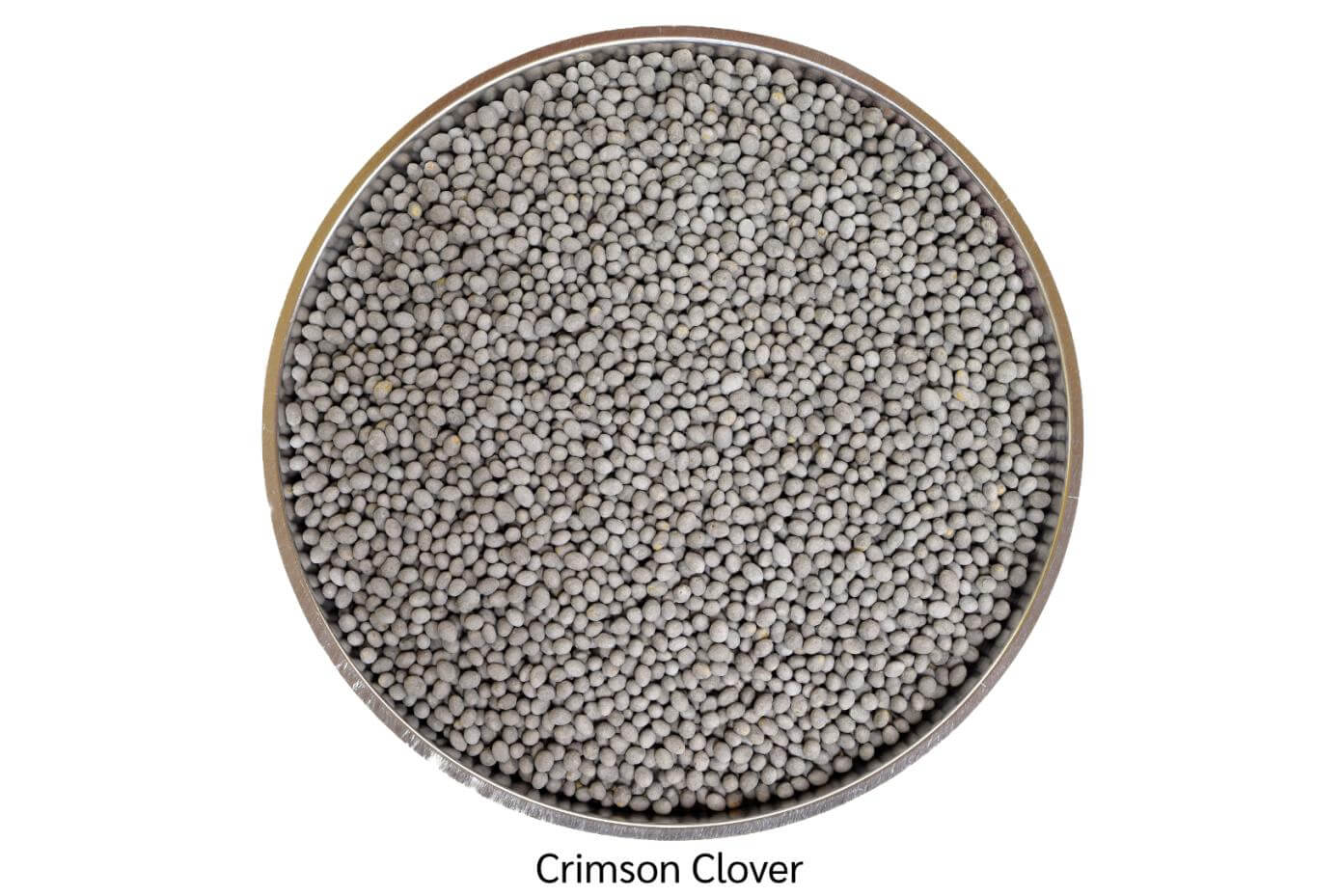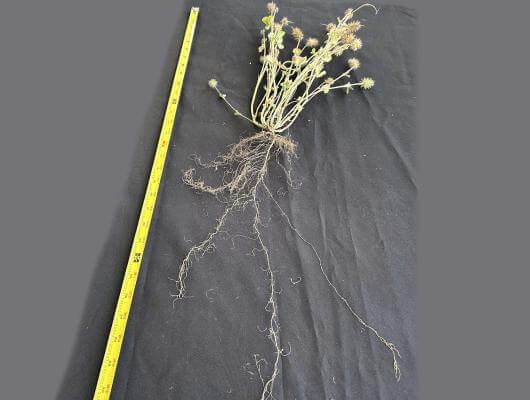Crimson Trifolium Incarnatum
Crimson clover is striking to behold, with brilliant color and a uniquely shaped flower. Yet there’s more to this variety than aesthetics. It is a dependable, high-yielding, annual clover.
A long history.
Crimson clover, also called “scarlet” or Italian clover, is native to southeastern Europe and southwestern Turkey. The first introductions into the United States came from Italy in the early 1800s and it then spread rapidly throughout the southeastern states.
Easy to distinguish, beautiful to behold.
Crimson clover is a winter annual with dark green, oval leaflets containing no V-shaped water mark making it easy to distinguish from other annual clovers. It has hairy stems and leaves and brilliant crimson flowers producing yellow rounded seed that are about 2.5 times larger than arrowleaf seed.
Growth comes easily.
Crimson’s large seed is responsible for its ability to easily establish in most seedbed conditions including simple broadcasting in un-tilled areas. Crimson prefers well-drained soils and pH between 5.0-6.5. Current varieties do not have good winter hardiness. It is the fastest growing of the annual clovers, easy to establish, and handles shade well - even the shade of other crops, like standing corn.
Widely used as a cover crop and as forage.
Crimson clover is widely used in the South as a dependable, high-yielding, early maturing, annual forage and roadside crop. It is also fast becoming a reliable cover crop for the North, as it has better growth at lower temperatures than most annual clovers. Crimson is also a good weed suppressor, organic matter increaser, and erosion controller. Forage production is high in protein and tonnage - up to 6,000 lbs. DM/acre. Bloat can be an issue, but usually not as likely as with white clover or alfalfa.
Nitrogen producer.
Crimson can provide nitrogen credit for succeeding crops of 70-150 lbs. N/A. In order to achieve optimal nitrogen fixation ability, crimson clover needs to be inoculated with Rhizobium leguminosarum biovar trifolii. This is best achieved with Nitro-Coat®.
What we recommend.
Dixie is the most popular variety on the market.
Crimson Clover Specifications
Planting
- Zones
- Zones 7, 8 and upper part of zone 9
- Longevity
- Annual
- Ease of Establishment
- Excellent
- Seeds/lb
- 150,000
- Seeding Rate - Straight
- 20-30 lbs/ac
- Seeding Rate - Mix
- 15-20 lbs/ac
- Seeding Time
- September - Early November
- Seeding Depth
- 3/8 - 1/2"
- Seeding Method
- Broadcast or drilled (preferred)
- Method of Killing/Suppression
- Mowing; grazing; chemical
- Optimal Germination Temperature
- Night temperatures > 40°F
- Seedling Emergence/Vigor
- Excellent
- Reseeding Potential
- Excellent
- Root Type
- Tap
Usage
- Grazing Potential
- Good
- Hay Potential
- Good
- Use with Wildlife
- Good
- Use in Orchards
- Good
- Use with Row Crops
- Good
- Use with Other Grasses/Legumes
- Good
- Bees/Beneficial Insects
- Excellent
- Compaction Control
- Good
- Erosion Control
- Excellent
- Weed Suppression Potential
- Excellent
- Green Manure/Cover Crop Use
- Excellent
- Spreading Capability
- Fair
- N Contribution Potential
- Good
- DM Potential
- Good
- Forage Quality
- Good
- Harvest Time Frame (late/early/year-round)
- Early
- Number of Harvest/yr
- 2 - 3 per growing season
- Other Comments
- Will produce more forage than other clovers at low temperatures; excellent for roadside beautification.
Tolerance
- Bloat Risk
- Moderate
- Disease Resistance
- Moderate - susceptible to crown and stem rots
- Insect/Nematode Risk
- Moderate - susceptible to clover head weevils
- Cold Tolerance
- Good
- Traffic Tolerance
- Good
- Heat Tolerance
- Good
- Drought Tolerance
- Good
- Shade Tolerance
- Good
- Dry Soil Tolerance
- Good
- Wet Soil Tolerance
- Good
- pH Range
- 5.0 - 6.5
- Required Fertility (P,K, other nutrients)
- Tolerant of lower pH soils than most clovers; responds to P and K fertilization.










